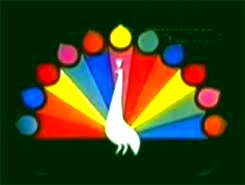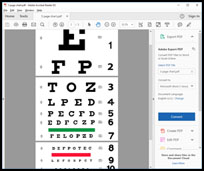If you’re watching TV or listening to the radio and aren’t interested in the current program, you’ll switch to something else which is more appealing. I think interest and engagement in what you’re looking at fuel the seeing process — something catches your attention, you keep looking, examining the details, it becomes even more interesting, and you look more. And the reverse is true: if you’re not really interested, you won’t really look! And your visual “muscles”, which are actually neural pathways in the brain, get sluggish.
So why not try another channel? Say you’ve been using your close vision for a while, at the computer or doing paperwork. You could take a break and go for a walk outside, looking at plants and houses and people, nothing you have to read or calculate. Using different parts of the brain, like taking up a musical instrument if you’re an accountant, makes a person smarter and more well-rounded. You want to exercise as many of those neural pathways as you can to be optimally functioning. The same applies to vision — give your visual system some variety!
One of the most vibrant exciting aspects of vision is color. The photo-receptors in the retina which help us see clarity are the same ones which process color, namely the cones. When I focus on looking at color, I feel like I’m helping my acuity too. Scan your environment: how many red items do you see? How many white ones, or yellow ones? This is a great game to play with a small child.
Another aspect of vision you won’t get too much of at the computer (unless you’re a graphic designer) is shape. The vertical or horizontal or angled straight lines are easy to pick out, door frames and air conditioners and roof lines on the houses, fences and railings and steps. What about curves? Let your gaze trace along the outline of that cloud overhead, or the edge of that bush, or the petal or leaf of that flower.
Don’t forget about the depth experience. After growing up in thick eyeglasses, it took me almost 6 months of dedicated training to see those 3D pictures. I had no depth perception at all — no wonder I had trouble catching a ball! Eyeglasses flatten depth, and the stronger the prescription, the more they do this. Peter Grunwald, the developer of the Eyebody Method of vision improvement, said one of the best practices for near-sighted folks to improve their vision is to focus on seeing depth. The true 3D depth experience is thrilling, one reason babies so love those mobiles dangling over their cribs. So notice the depth in the tree branches, or the clouds, or just in the nooks and crannies inside your house. The screens we spend so much time looking at are getting better and better at simulating depth, but there’s nothing like the real thing.
So vary your looking among these different “channels”, to keep things interesting. And switch the distance at which you’re looking — if you spend a lot of time at the computer, glance out the window occasionally and really see what’s out there for a minute or two. I think one reason people begin to lose their vision is that they’re bored, so they start withdrawing from looking in an interested curious way. Then like muscles atrophying if they’re not used, the visual circuits in the brain start getting “rusty”. Keep your brain alive, and your vision. There are so many different delightful sights to see!

I wore strong glasses, then contact lenses, from age 5 into my 40s. While making many mistakes, eventually l learned how to improve the way I use my eyes and to see in a more relaxed, healthy manner. It is my pleasure to coach others to do the same. Visit me at https://NancyLNeff.com.


